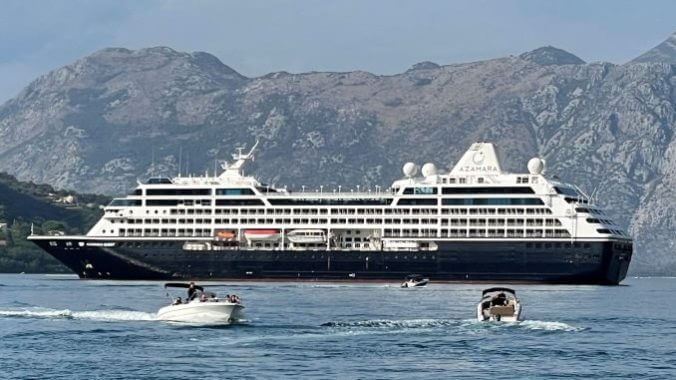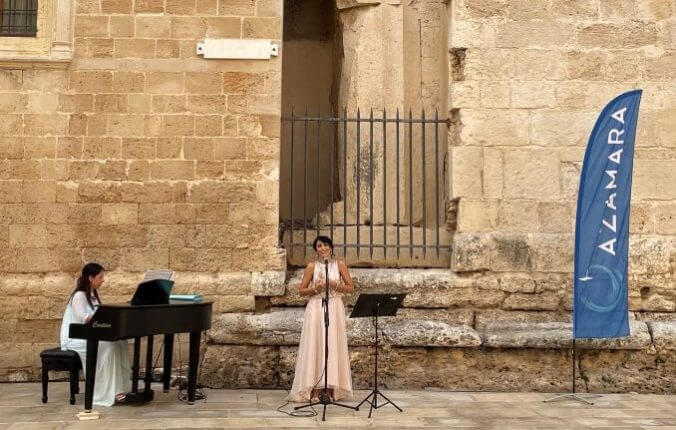What to Expect from an Azamara Cruise
Photos by Garrett Martin
There are a ton of options to sort through if you’re looking to go on a cruise. Where do you want to go? Do you want to party or do you want to see the world? Do you want to sail on a boat that’s basically a floating amusement park, or do you want something smaller, quieter, or classier? If you’re looking for a boutique cruising experience focused on the cultural heritage of your destinations, and with an elegant but comfortable vibe that’s a little more upscale than what you’ll find with some of the largest cruise lines, you might want to consider Azamara Cruises. I recently spent 10 days on an Italy intensive Azamara cruise, aboard the Azamara Quest ship, and if you’re wondering what an Azamara cruise is really like, read on.
An “Intensive” Exploration of Different Countries and Cultures
Azamara specializes in what they call “Destination Immersion experiences”—lengthy cruises that dock in numerous ports in a specific region of the world, providing guests with an intensive introduction to the local culture, and often including UNESCO World Heritage sites on the itinerary. Our voyage—an “Italy intensive” that started in Chioggia (effectively the cruise port for Venice), cruised through the Adriatic while hitting stops in Montenegro and Croatia, headed through the Ionian with multiple stops in Sicily, and eventually ended in Rome—was like a 10-day overview of the region, giving us several hours each day to explore a different city before returning to the ship to push off to the next destination. The best way to describe it is like staying in the same hotel while the city changes every day; you don’t have to worry about the inconvenience of changing hotels or finding transportation from town to town, but you also get a fairly limited amount of time in each city. For example: if you were on our cruise and really wanted to explore Venice, you should’ve flown in early and spent a few days there before the cruise officially started. We did that on our own, but Azamara offers packages that let you spend more time in the cities that bookend your trip—in our case, Venice and Rome. The advantage to this model—in addition to, again, not having to worry about checking into various hotels and dealing with local transit—is that pretty much all risk and effort is removed from the equation. You can board Azamara’s ship on day one assured that you’ll get enough time to get your toes wet in whatever town you visit—and, in some cases, as with Kotor in Montenegro or Siracusa, see pretty much all the major tourist attractions.

Ample Excursions
Every stop on our cruise came with a long list of excursions we could pick from, at an additional cost per person. It was fun and easy to explore any of the cities on our trip on our own, but these excursions make it even easier, and can also introduce you to tourist and historical sites you maybe wouldn’t think to visit on your own. We were able to knock some of the major goals off our to-do lists—we visited Pompeii and saw the mosaics of Ravenna—while also having fascinating experiences we never would’ve prioritized on our own, like taking a wine train through the vineyards and wineries outside Dubrovnik. It’s easy to book excursions online before the cruise or the night before once you’re on the ship, although some will sell out in advance. Azamara also hosts a series of AzAmazing Celebrations, which are unique experiences and explorations focused on the culture of whatever city or country they’re based in; a recent AzAmazing Day in Siracusa featured an opera performance, an actress reciting the city’s foundational myth, and more. Hearing live opera echo throughout the plaza next to the Duomo di Siracusa was an unforgettable part of our cruise.
A Manageable Ship and Respectful, Reserved Passengers
Azamara’s four ships are noticeably smaller than the massive boats you might be familiar with from cruises to the Caribbean. The Quest, the ship we were on, holds about 700 passengers. Its smaller size makes it easier to navigate than some of the titans you’ll find in other lines, and it’s also easier to find quiet nooks to settle into if you want to get out of your cabin but don’t want to be surrounded by others. It’s also not a hard-partying crowd; the average age of an Azamara guest is in the 50s, and during our cruise we only saw a couple of teenagers and a single child (infants under six months aren’t allowed). Based on the many fellow passengers we met during dinners and excursions, it’s particularly popular with retirees. Many of them return to Azamara regularly; we met a duo of American friends who were on their 12th Azamara voyage, and a couple from England who were on their fourth trip with the cruise line. Both of them were impressed with how Azamara routinely remembers them and their preferences when it comes to drinks, desserts, and where to sit in the dining room. That’s the kind of attention to detail that really encourages loyalty from a customer, and based on the people we talked to onboard Azamara has some extremely loyal guests.

Legitimately Good Food
Cruise food can be a major roll of the dice, even within the same cruise line or on the same ship. Of the various cruises I’ve been on, Azamara has the most consistently good dining options, with most of them included in your standard package. The highlight is probably Discoveries Restaurant; it’s not the best or fanciest restaurant onboard, but it’s close on both counts, and you don’t have to pay extra to eat there. It has a consistently great menu with a number of regular dishes as well as nightly specials and themes that reflect different styles of cuisine. You don’t have to wear a coat, but don’t expect to get a table if you’re wearing a ballcap, shorts, or jeans with holes in them. It’s almost as good as the ship’s two higher-end restaurants, but you don’t need a reservation and it’s included as part of your standard cruise package, making it a fantastic combination of quality and affordability.
-

-

-

-

-

-

-

-

-

-

-

-

-

-

-

-

-

-

-

-

-

-

-

-

-

-

-

-

-

-

-

-

-

-

-

-

-

-

-

-









































